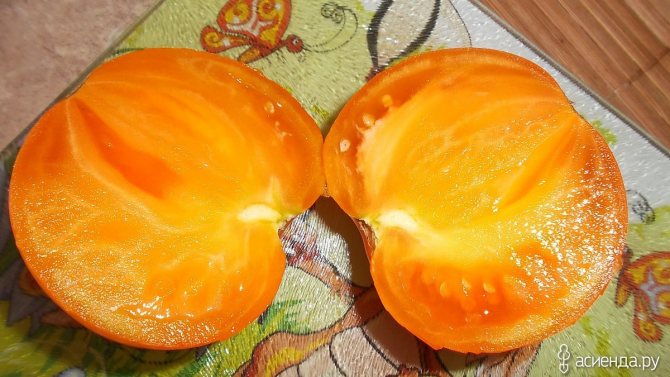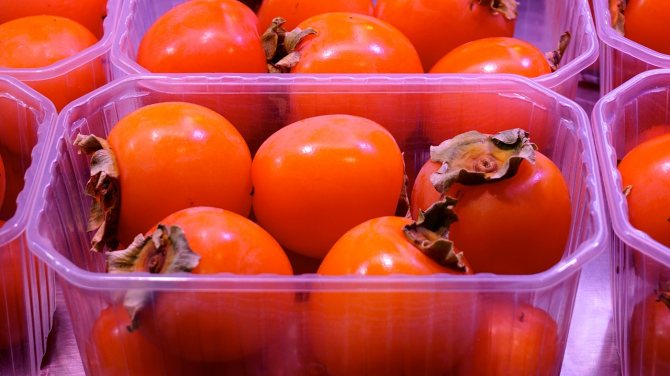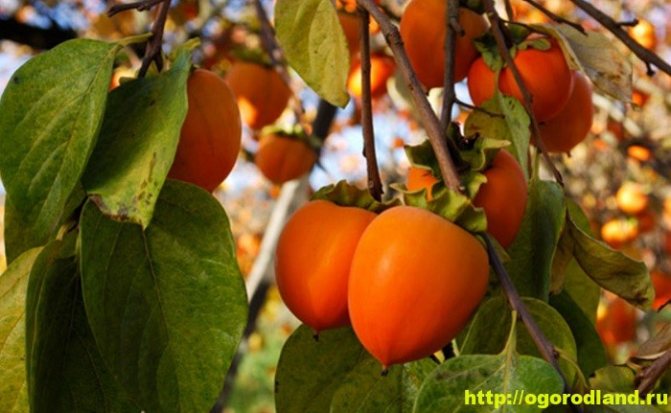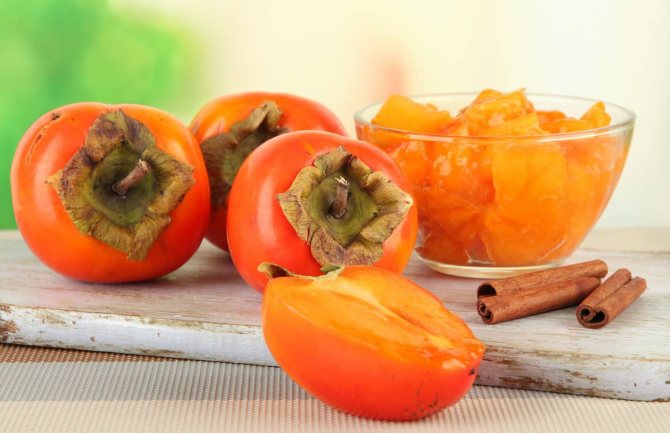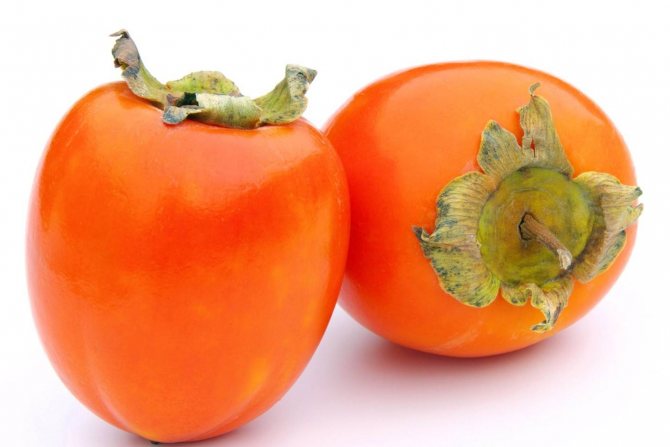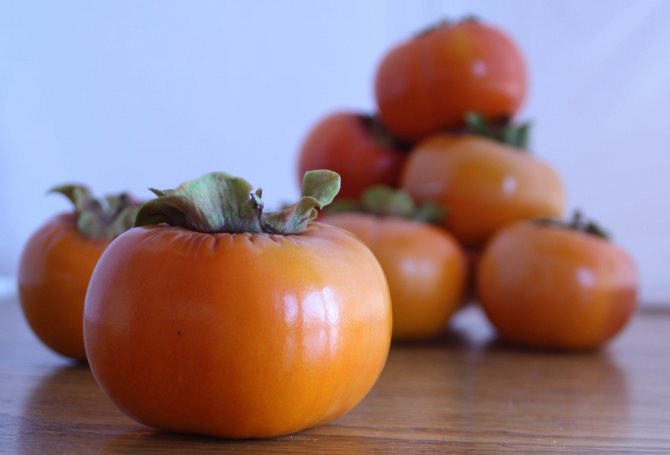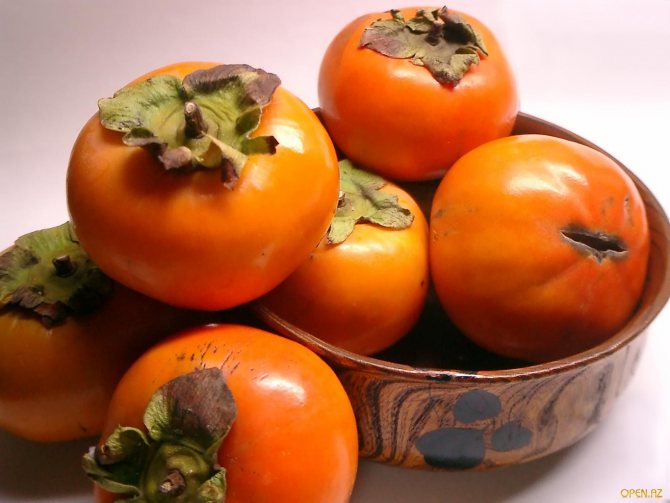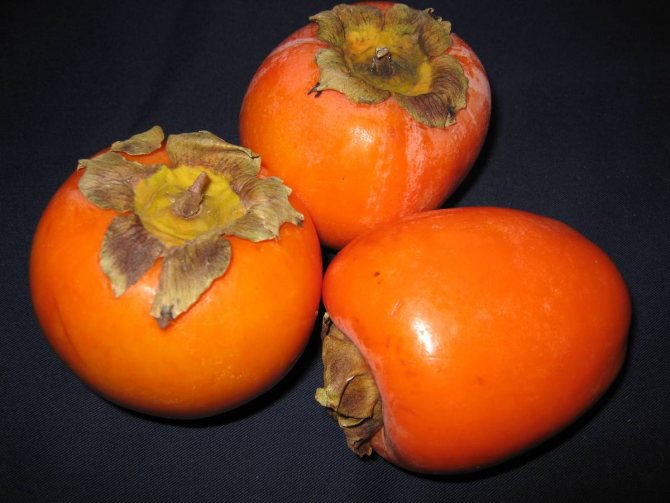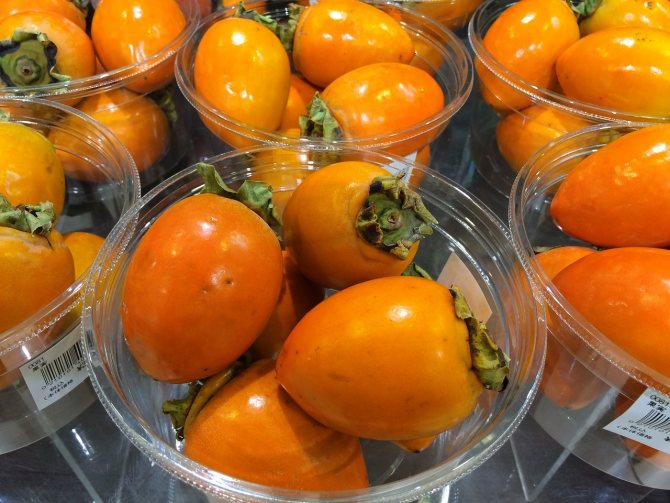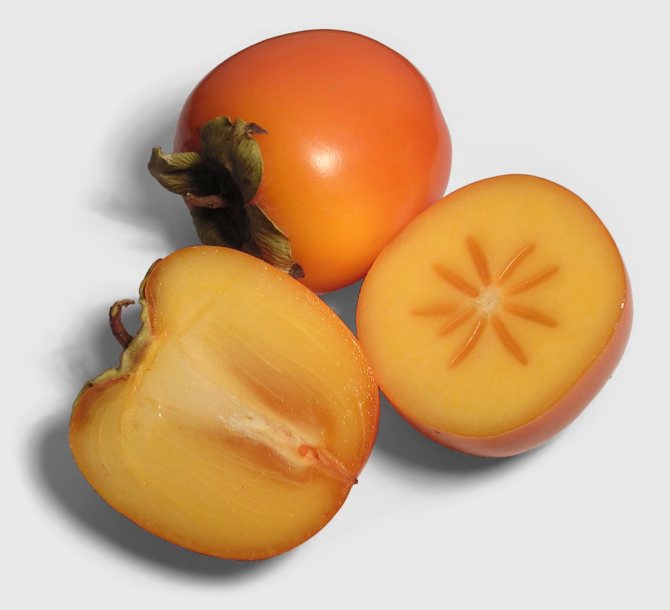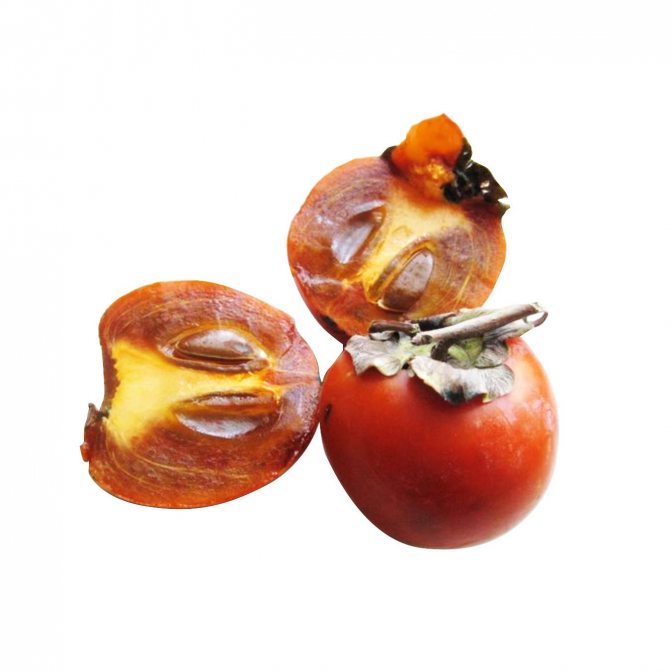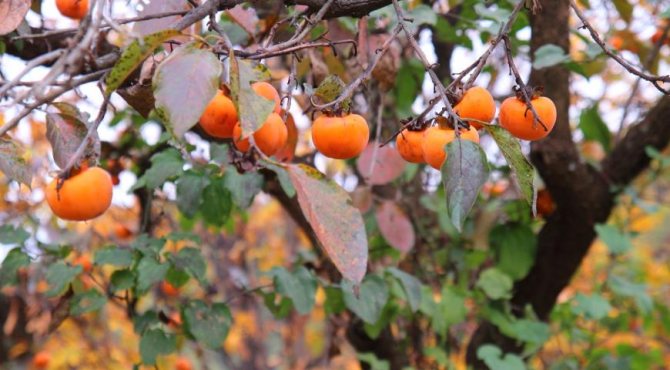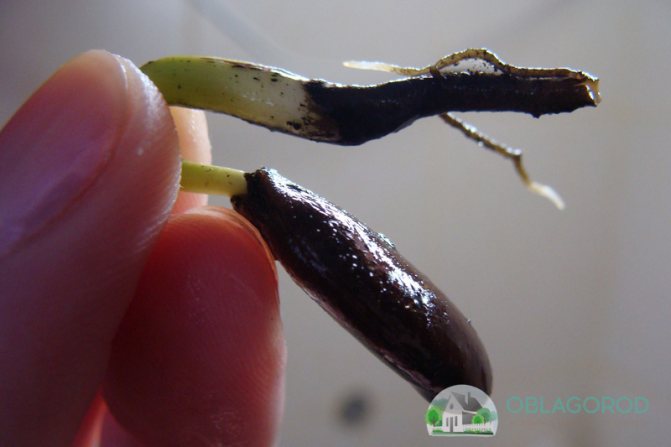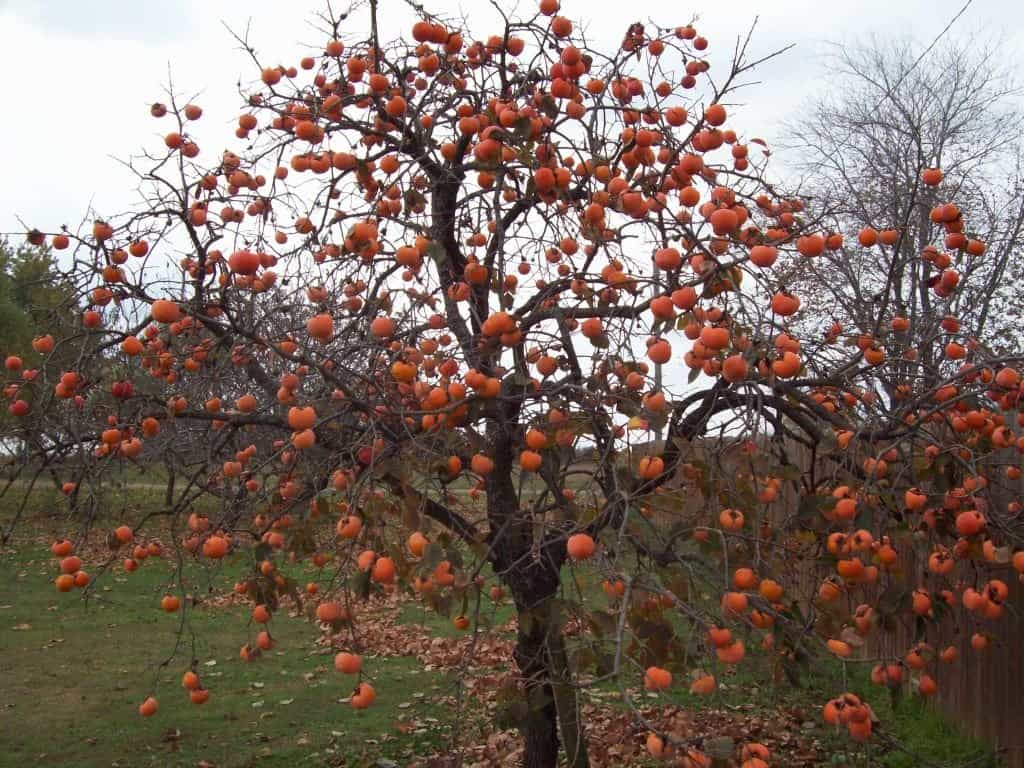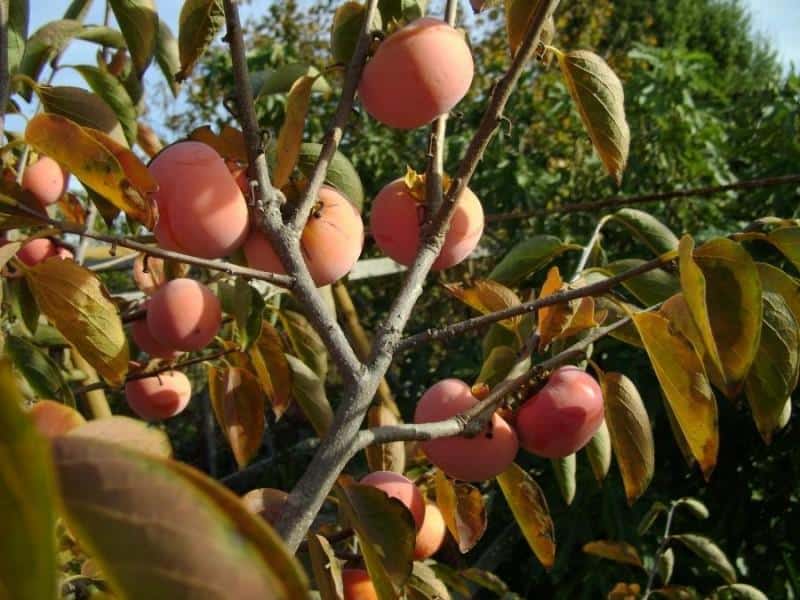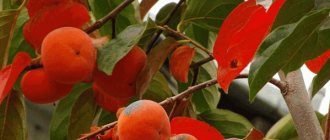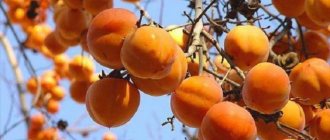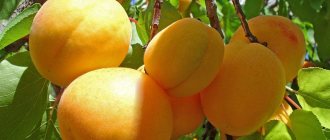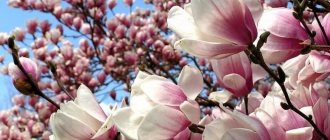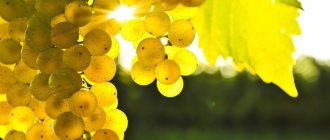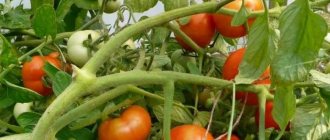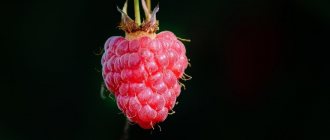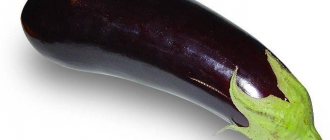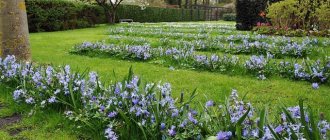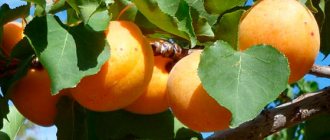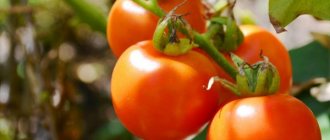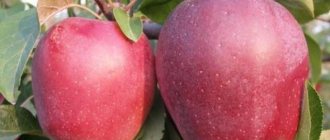Features of growing virgin persimmon in the Belgorod region.
Persimmon virgin (Diospyros virginiana) is found in the wild in North America, in the US states of Virginia, Connecticut, Texas, Florida. Persimmon virginiana is a monoecious or dioecious deciduous tree.
Every autumn, various subtropical fruits are brought to our markets from the south, including fruits persimmon
... Many people like its taste and beautiful appearance. In addition, persimmon is quite useful for human health, as many only guess. It turns out that it is not only tasty in itself. From persimmon, or with its participation, you can prepare many healthy and tasty dishes, puddings, jellies, ice cream, cookies, wine, etc.
The climatic conditions of the Belgorod region are quite suitable for growing a large number of plants, which, for various reasons, have not yet come to us and have not become widespread in gardens. Growing experiment virgin persimmon
in Shebekino lasts more than ten years and has already led to positive results. Now it continues at a new level, in the near future new forms of persimmon will be presented, which will increase the assortment in terms of such characteristics as size, weight and shape of fruits, taste, as well as ripening periods.
When acquaintances come to me, I invite them to see how the persimmon grows. They look in amazement at the tree covered with fruits and exclaim: "And what is it growing with us ?!" Yes, it grows and also bears fruit, delighting us with delicious fruits!
Many people, having eaten the persimmon fruit bought in the market, plant the remaining seeds in flower pots. But, after germination, persimmon seedlings die for various reasons, without making their owner happy. This is the end of the knowledge of most gardeners about persimmons.
Few people know that persimmon has its own special physiology, different from many fruit plants grown in our gardens. Growing seedlings has many pitfalls and requires relevant knowledge and experience. Therefore, I advise you to purchase only plants with a closed root system, so as not to waste years experimenting with an unknown result. Without going into the peculiarities of the development of the root system of the Virginia persimmon, I will say that the presence of an intact root system during planting is a guarantee of success and full development.
I will try to highlight the main points of the physiology of persimmon development. Considering that there are many varieties of persimmon, we will focus only on virgin persimmon and only in part of its variety with 90 chromosomes. Only seedlings of this persimmon, selected from a large number of varieties, are able to really grow and bear fruit in our climate. Therefore, the present description will correspond to the selected virgin persimmon seedlings grown in Shebekino. All varieties of virgin persimmon were tested both in the city itself and on the outskirts in Logovoe "with a good field breeze" and increased frost. Over the past years, they have withstood three cold winters with frosts below -30C, without any damage. At the age of ten, they reach a size of 3m in height and more than 2m in width. Today these are the most frost-resistant persimmon plants ever grown in Russia.There are three of them, they received the working names "Belogorie" (female), Nobel (male, but sometimes female flowers and fruits are possible), Maine (male).
Persimmon virginiana is a fairly plastic plant, very sensitive to temperature conditions. It begins its development in spring only when the temperature rises above 20 degrees Celsius, i.e. the buds do not react to short-term warming in spring and begin to swell only in stable warm weather. This usually happens in late April or early May. Fruiting and flowering on persimmon usually begins with branches of the 4th or 5th order.
The physiology of persimmon bud development differs from many fruit trees. Usually on apple trees, pears, apricots, etc. flower buds are specially laid, and persimmons do not have flower buds as such. Persimmon more resembles grapes; in early May, a branch immediately with leaves grows from a bud. Young leaves of green color can have shades of yellow or reddish. In the axils of the leaves, starting from 3-5 leaves, buds of future flowers grow. Usually on new branches there are 3-4 single female flowers in females. Up to 5-6 "triplets" of male flowers grow on male plants. But, there are times when branches grow without flowers. As a rule, this happens due to the poor development of the kidney in the last season.
Opposite cases are also possible, when the plant developed quite strongly in the past period and has a supply of substances, in this case it is able to awaken a dormant bud on a two or three year old branch and expel a sufficiently strong shoot, while this shoot may also have buds and subsequently ripen the fruits , the quality is not worse than on the main branches.
Typically, the flowering process of persimmons begins in late May and lasts for 10 days on female plants. Males bloom earlier than females for several days and finish flowering later. Thus, the process of pollination of individuals occurs fairly evenly in time. At the beginning of flowering, ants and bumblebees are engaged in pollination, then bees arrive.
Male flowers are small, about 1cm long and 5-6mm in diameter, usually growing three together, first the middle flower blooms, then the others in turn. Female flowers are yellow, bell-shaped with 4-6 petals, usually single, but there are twins on one leg. In size, female flowers are 2-3 times larger than male ones.
Usually, by the 20th of June, the main part of the set fruits is 1-2 cm in size. The fall of the ovaries is possible until the end of June, but in total it does not exceed 10-20% of the fruits. Usually, at this time, the leaves acquire a turgor and become a rich green color, the growth processes of the branches in length generally end, the branches are strengthening and lignification.
In early July, a second wave of growth is possible in young plants that have not entered the fruiting period. At the ends of the tops of fruiting plants, if the tree has sufficiently good nutrition and care, a second wave of growth is also sometimes possible, and even repeated flowering is possible.
| Persimmon virginskaya grade Belogorye, October collection. |
Further, until mid-August and September, the fruits gain size and weight. From mid-August, depending on the ripening period of the plant (variety), the fruits begin to color. After being stained yellow or orange, persimmon fruits can ripen in a warm and hot period for 10 days, in a cold period much longer, even more than a month. Ripe fruits fall off by themselves. They can also be plucked, while it is necessary to be guided by the fact that the fruits should be easily separated from the branch. Even in appearance, ripe fruits, but with difficulty separating from the branch, usually have astringency. The yellowing of the foliage and the fall of leaves occurs in late September and early October. At this time, the persimmon tree has an unusually beautiful landscape view of autumn colors. With the complete absence of foliage, a lot of fruits remain on the tree. They mature gradually.In cold weather (late October), it is better to ripen the remaining fruits at home, let them just lie down for several days in a warm place.
The location of the site affects the development and fruiting of persimmons. Of course, in a house protected from the winds, plants begin growing earlier, and in the field all processes can be delayed for 7-10 days. Fertilizing with mineral fertilizers and timely watering with water, of course, accelerate the development of the plant. It should be especially noted that the presence of nitrogen in our soils is quite large and therefore the trees of the Virginia persimmon develop well both on chernozems and on sandy soils. Therefore, fertilizers should be applied mainly with phosphorus and potash (in August) in order to accelerate the ripening of fruits and their higher quality, as well as to prepare the plant in time for winter. As for diseases and pests, no problems have been identified since then. Until the first flowering, persimmon processing was not carried out. Further, for prophylaxis, he began to process, like other plants, according to the usual scheme, although this may not be necessary. In the spring, after the snow melts (early April), I process persimmons (like apricots and peaches) with "Bordeaux liquid" or "Horus", and after a couple of days from pests with any commercially available insecticide of the "Commander" type.
DIY solar energy storage system for growing southern plants - diagram
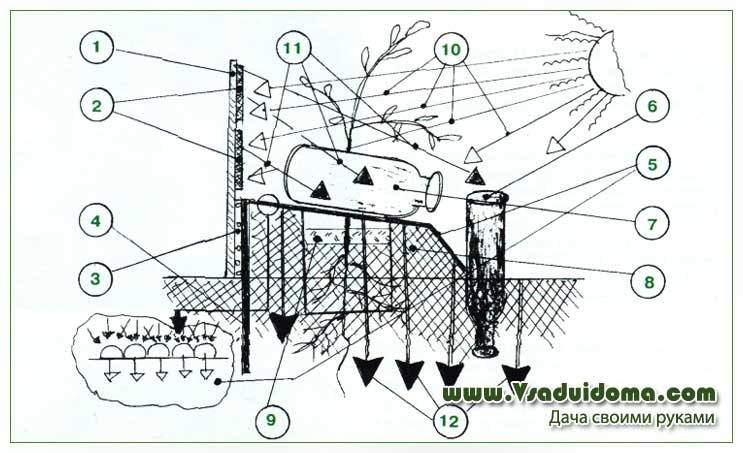
1 - protective polycarbonate anti-wind wall, located from the northwest direction;
2 - mirrors reflecting the sun's rays on the seedling and dark absorbing surfaces (bubble wrap, glass bottles, PET bottles);
3 - metal reinforcing mesh for rigidity;
4 - a piece of reinforcement, driven into the ground and which is a support for the entire structure;
5 - a dark bubble film that maximally absorbs direct and reflected rays by its entire volumetric surface;
6 - buried dark glass bottles, converting solar energy into heat and giving it to the soil; 7-1.5-, 2- and 3-liter PET bottles (made from kvass and beer), filled with water and laid out around the seedling, accumulate solar energy during the day, and at night they release it in the form of heat into the surrounding air and soil;
8 - earthen half-shaft descending towards the southeast;
9 - mulch (wood chips), which reduces moisture evaporation from the surface of the trunk circle;
10 - falling sun rays;
11 - rays reflected from mirror surfaces; 12 - direction of absorption of thermal energy accumulated on the surface of dark objects
ORDER QUALITY AND CHEAP SEEDS AND OTHER GOODS FOR HOME AND COTTAGE. PRICES ARE BOTTLE. CHECKED! JUST SEE YOURSELF AND BE AMAZED. THERE ARE REVIEWS. GO >>>
Below are other entries on the topic "Cottage and garden - do it yourself"
- Do-it-yourself decorative flower bed: How to make a decorative ...
- Do-it-yourself vertical bed from a barrel: How to make a vertical bed from ...
- Persimmon at home: planting and care: Growing persimmons at home One ...
- Zoning a flower garden with a border - master class and photo: Border in a flower garden with your own hands The most ...
- Do-it-yourself summer house-temporary house in the country: How to build a house for guests ...
- Crafts from tires for decorating a summer cottage - a "tea set" with your own hands: What can be done from old ...
- Persimmon in open ground, without shelter - planting and care: CULTIVATION OF Persimmon - WHERE AND ...
Subscribe to updates in our groups and share.
How to plant a persimmon seedling correctly?
If we are dealing with a container, then everything is quite simple. We dig a planting hole at least 2-3 times larger and deeper than the container. First of all, I will say right away that it is better to fill the planting hole with soil that is light in structure, for faster development of the plant and its preparation for grafting.The composition of this soil should consist of 1/3 of the soil from the planting site, 2/3 of fertile soil from the forest (I recommend rotted litter next to the trunks of healthy and well-developed pine trees growing on the sand). We fill the resulting composition of the soil into the hole, leave a place in height for a plant with a full lump of earth from the container. Cut off the bottom of the container in a circle, but do not remove the bottom. Cut off one side of the container with a sharp knife from top to bottom to the bottom. On my containers there is an inscription NORD, which means "north", so when planting we observe the polarity of plant development. Carefully place the container on the bottom of the pit with the NORD lettering to the north. We take out the bottom of the container to the side. We bend the walls in the place where the container is cut in different directions and pull this part of the container out of the pit. A plant with a clod of earth remained in the hole, in which it grew. Thus, the entire root system of the plant has been transferred to a permanent place without any damage and it will continue to develop painlessly. Fill the remaining void on the sides with a mixture of soil. Watering. It is possible and necessary to mulch with a 1 cm layer of the planting site of the mown or plucked grass. But move the grass from the trunk of the plant by 2-3 cm. Later, as the soil settles, in heterogeneous places where cracks will be observed, pour a little earth, until they completely disappear.
Competent choice of seedlings when buying
Through the efforts of the breeders of the Nikitsky Botanical Garden, it was proved that the plant can bring good harvests not only in the southern regions of Crimea, but throughout the entire territory of the peninsula. And in order to get high-quality planting material, it is important to first get advice from the specialists of a local nursery. Only they will be able to choose the perfect persimmon variety for your locality.
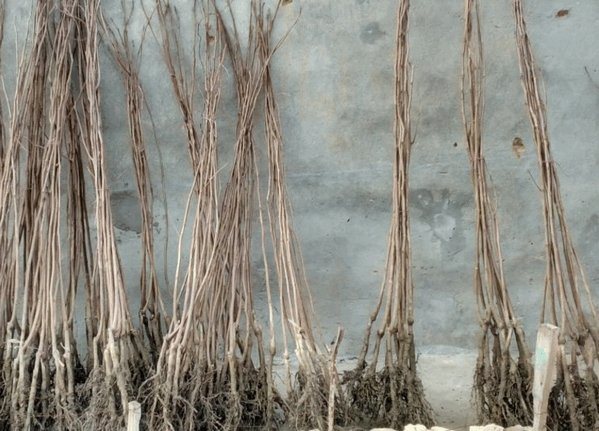

Market squares and exhibitions are completely unsuitable for such purchases. In such places, you can get a wild or a variety that will disappear on your site in the very first winter.
Today on the peninsula there are several nurseries where you can buy seedlings: in the village of Semennoe, Nizhnegorsk region and in the village of Novopavlovka, Bakhchisarai region. And it is also possible in the village of Nikita and the city of Yalta, where the Trade House of the Nikitsky Botanical Garden is located.
Did you know? In many countries, persimmon wood is widely used, which stands out for its delicacy and sophistication. The material is used to make furniture, musical instruments and sports equipment.
Don't buy seedlings at random, because in such cases there are high risks that the tree will not take root well and will not bring the expected fruiting. When you receive qualified expert advice, carefully examine the assortment of the proposed variety.
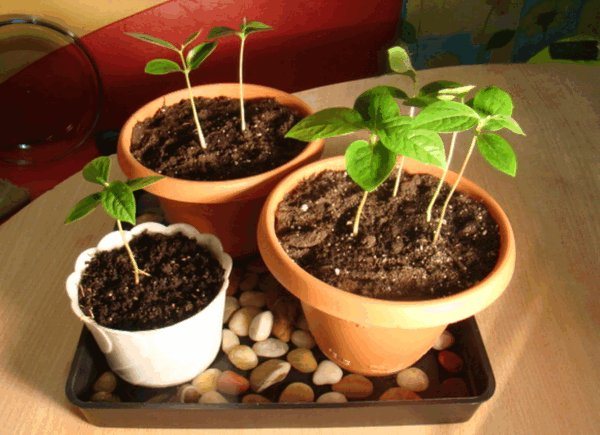

Seedlings can be sold in containers and with open roots. In the second option, it is important to make sure of the integrity, intactness of the root system and trunk. A healthy tree should have a highly branched, viable root system with thin branches and a smooth uniform surface, an even thick trunk and 4-5 skeletal branches.
The lateral processes of the roots have increased sensitivity. If dug up incorrectly, they will die in a few hours. Specimens with dead branching and fresh taproots are quite suitable for planting, but they will begin to vegetate much later. Experts advise to treat such moments categorically and give preference only to high-quality seedlings.
Important! Persimmon seedlings with open roots are best bought in the fall, and container options can be rooted in the spring.
Planting material in a pot is assessed by the condition of the trunk and branches... They should have a flat surface, without stains, darkened or moldy areas, mechanical or any other damage.If we are talking about a graft, carefully examine the vaccination site. There should be no cracks or breaks on it. Remember that biennial specimens take root better.
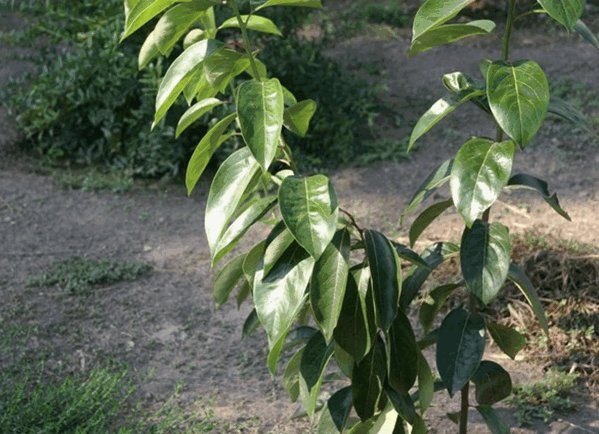

How to properly care for a persimmon tree?
There are no special recommendations, persimmon is grown as a common garden plant such as apple or apricot. Basically, persimmons need to be watered during the hot period of summer. Fertilizing with mineral fertilizers can be carried out if necessary. No shelters, insulation, etc. do not need to be done for the winter. It is possible only if your site is not fenced and there are hares, in this case it is necessary to make a fence for the trunk, but there should be light and air (it is possible from the netting of the chain-link). Also, if there are strong winds on your site, then you will need to attach the trunk to a support that can hold back strong gusts of wind until the trunk of the plant gains thickness. But, nevertheless, it is advisable to grow persimmons in the yard of the household, this will give additional advantages for an earlier start of growth in the spring and, accordingly, earlier fruiting in the fall.
Suitable species and varieties
According to The Plant List, there are about 725 varieties of persimmons. Some of them are grown as horticultural crops. The following types are recommended for planting:
- Virginia... It grows up to 20 m in height, the root system has a weak resistance to frost. It develops very slowly, it is important to control soil moisture. The fruits are very sweet;
- Eastern... The most common persimmon is native to China. Has average stability indicators. Shows slow growth but high yields. The fruits are colored orange or red.
All persimmon varieties are divided into varying and constant. The first type changes the color of the pulp depending on the method of pollination, the second - the shade of the fruit does not change. Persimmons can be sweet or tart depending on their taste. When choosing a variety, it is recommended to give preference to zoned hybrids, since they have increased productivity, resistance to temperature extremes.
Persimmon grafting.
Grafting is a necessary process for persimmons, given that they are basically a separately hollow plant, i.e. there are male and female trees. In addition to the separately hollow plants, there is a small group of female plants that set fruits without pollination by male specimens. And there are several varieties with flowers of both sexes, i.e. self-fertile. In order to exclude options for tree infertility, we inoculate the necessary varieties on seedlings at the age of 2-3 years and then, if necessary, expand the range on one plant.
The grafting process is now well established on a large amount of material. The results obtained suggest that different varieties of Virginia persimmon have different compatibility in grafting, because have different origins (habitats in nature) and even outwardly have quite visible physical differences.
Description of varieties
Russian woman
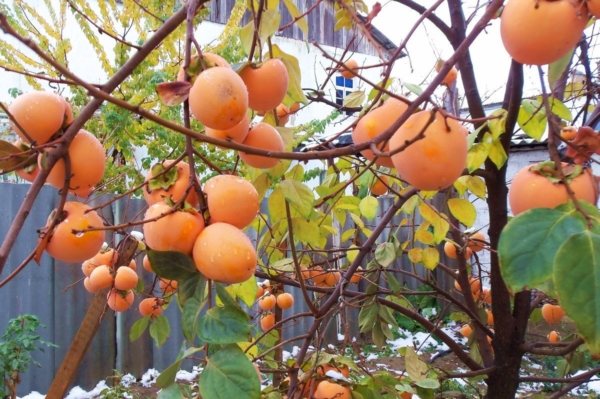

Low-growing variety with good frost resistance. The tree has a wide crown... The fruits have a slightly flattened shape. The yield of this species is high. One adult tree can bear up to 80 kg of fruit. Full maturation usually occurs by the end of autumn.
We offer you to watch a video about persimmon Russian woman:
Nikitskaya burgundy
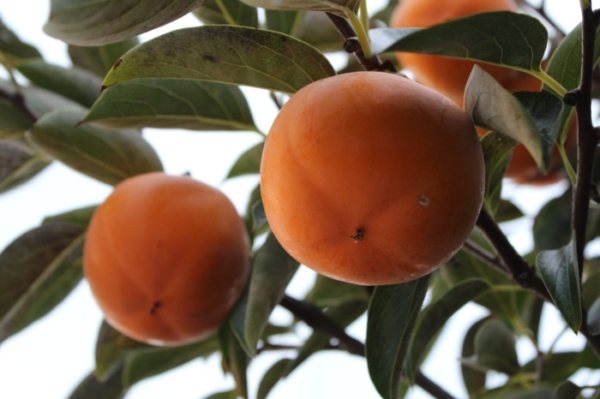

From the name it can be understood that this variety has an unusual color. Possesses good frost resistance and easily tolerates temperatures of -25 degrees.
John Rick
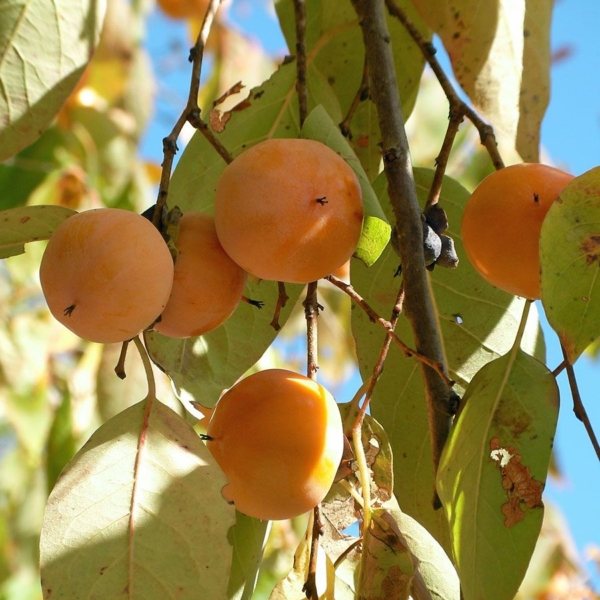

Self-fertile persimmon variety with a tree height of 3.5-4 m. The variety can withstand temperatures down to -27 degrees.
Meader
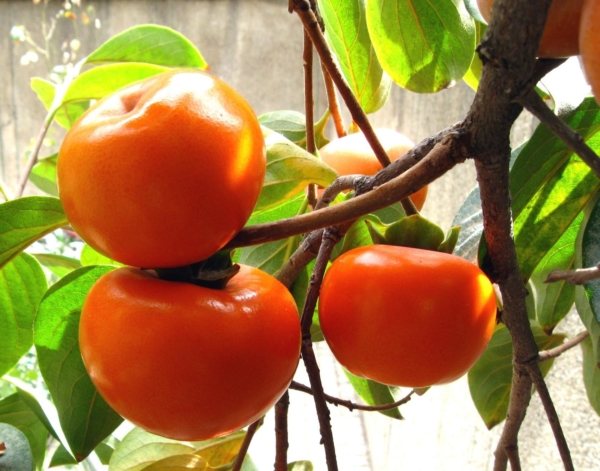

It differs in that it does not discard fruits. The fruit itself has a beautiful red color. This variety is able to withstand temperatures down to -30 degrees.
Mount Hoverla
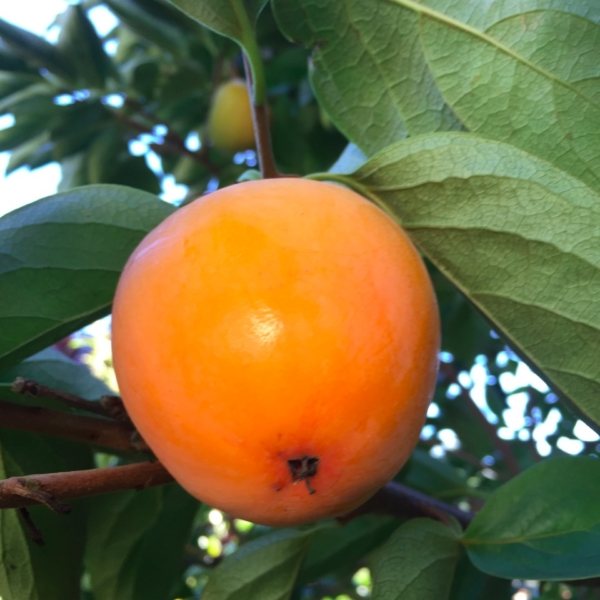

A dioecious persimmon that tolerates temperatures down to -24 degrees. The tree is distinguished by its height, which reaches 4-4.5 meters.
Roman-Kosh
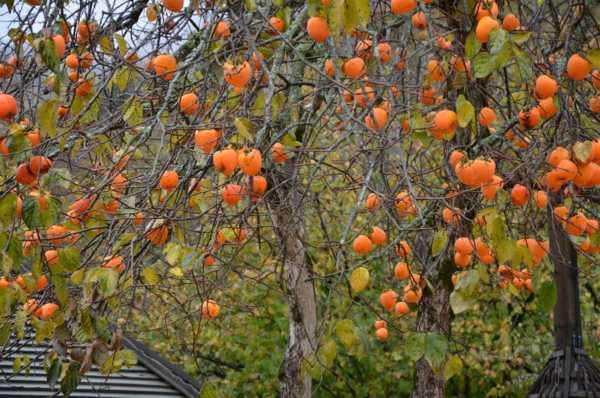

It is a dioecious variety that requires mandatory pollination. Withstands low temperatures down to -27 degrees, but for a short time. Trees also reach a height of 4-4.5 m.
Winter hardy persimmon. Is it worth growing?
The visible differences are strong in the leaves. In one group, persimmons have pubescence and the color of the leaves is dull green, while in others they are glossy and there is no pubescence. The same situation is with annual branches - smooth or with pubescence.
The main time for vaccinations in our climatic zone is the end of April until the end of May. They are performed by methods of improved copulation or splitting.
Evdokimov V.M. Shebekino.
I wish you all good health and big harvests!
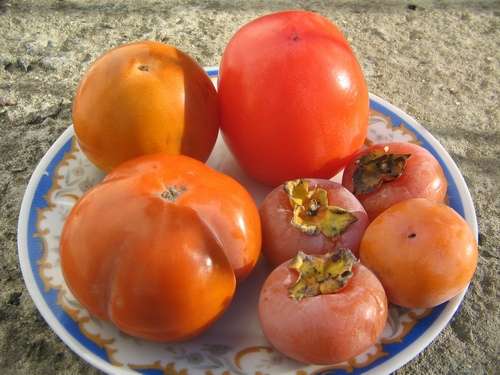

Persimmon virginskaya, grade "Belogorye" in comparison with other varieties.
Landing "Rossiyanka"
Before planting, you need to take care of buying the seedlings themselves. You can buy them online or at nurseries. You should not buy seedlings from your hands, because you can buy something completely different from what you expected.
The seedling should not be older than two years of age - in older adults there is a risk of not transferring the transplant, the plant may simply not adapt and take root.
- Before planting in open ground, the roots of a young seedling should be placed in a container of water for several hours.
- It should be borne in mind that groundwater should be located no closer than 70 - 80 cm to the surface of the earth. Strong waterlogging contributes to the development of additional shoots, and not the growth of the tree itself. The depth of the root in the soil usually does not exceed half a meter, if the seedling is a year or a half.
- If you are just trying to plant persimmons in your garden, then it is better to choose a place on the south side or near the wall of the house, which will protect the tree from winds and drafts. The place should be sunny and dry, in the shade the persimmon does not develop well, and you can not wait for the harvest at all.
Planting is carried out in the spring, mainly in regions with harsh winters and cold autumn. In warmer areas, seedlings can be planted in the fall.
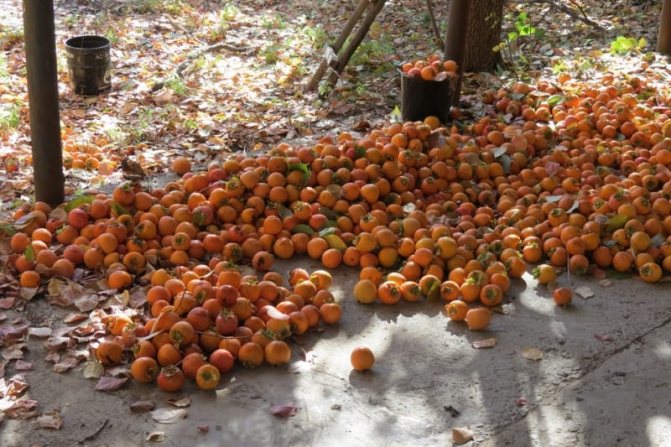

Site and soil preparation before planting
Each gardener needs to prepare a site for planting a seedling in advance. The following steps are required:
- The soil for the seedling is fertilized with peat, thoroughly loosened. It should be light in structure, good air permeability. In terms of composition, preference is given to slightly acidic soil.
- Immediately before planting, it is necessary to dig a hole 60 cm deep and in diameter. Soil is laid on the bottom, to which it is recommended to add manure and river sand in equal proportions. The hole should be left to ventilate for a while and the ground should be allowed to warm up.
- When planting, to protect the young tree, a small support is installed in the ground so that the trunk does not break from the wind.
- Only two days after the airing of the planting pit, the seedling is lowered into the hole, the soil is slightly tamped near the trunk. Then it is poured over with water at room temperature. The near-stem area is covered with leaves, dry grass, so that the seedling takes root and successfully passes the adaptation period.
Having planted a persimmon bush, you should adhere to some simple rules for further care. While growing a seedling to the state of an adult tree, your attention and care will be needed.

